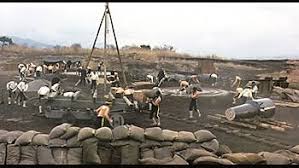The Gilded Age: A Period of Change and Challenge in America

Introduction
The Gilded Age, spanning from the 1870s to about 1900, was a pivotal period in American history characterized by rapid economic growth, industrialisation, and significant social change. This era marked the expansion of the United States into a global economic power yet was also a time of stark social inequality and political corruption. Understanding the complexities of the Gilded Age is crucial for grasping the foundational shifts that shaped modern America and its socio-economic landscape.
Economic Growth and Industrialisation
During the Gilded Age, the United States experienced an unparalleled economic boom, primarily driven by industrialisation. Key industries such as steel, oil, and railroads saw massive expansion, with figures like Andrew Carnegie and John D. Rockefeller emerging as leading industrialists. By the 1890s, the US was producing nearly 40% of the world’s steel, propelled by innovative manufacturing processes and the rise of urban centres. This growth was facilitated by a wave of immigration, with millions arriving from Europe seeking work opportunities in factories and expanding metropolis.
Social Issues and Inequality
However, this economic prosperity was overshadowed by troubling social issues. While a wealthy elite benefited immensely, vast swathes of the population lived in poverty. Working conditions in factories were often hazardous, with long hours and minimal pay, prompting the rise of labour unions and strikes. The famous Haymarket Affair in 1886, for instance, illustrated the growing tension between labourers and industrialists, influencing public perception of workers’ rights and labour movements.
Political Corruption and Reform Movements
The Gilded Age was also notorious for political corruption, with numerous scandals emerging in local and federal government. The term ‘Gilded Age’ itself, coined by Mark Twain, highlighted the façade of prosperity that masked the underlying moral decay and graft. In response to these corrupt practices, reform movements began to emerge, advocating for civil service reforms and transparency in governance. The establishment of organisations like the Progressives sought to address these issues, laying the groundwork for significant reforms in the early 20th century.
Conclusion
The Gilded Age, while celebrated for its innovations and economic prowess, serves as a crucial reminder of the complexities and contradictions in American history. The social challenges and political corruption of this era highlight the continual struggles for equality and justice, making it a significant period for today’s readers to understand. As we reflect on the legacies of the Gilded Age, it is essential to consider how its lessons continue to resonate in contemporary discussions surrounding economic disparity and political ethics.









